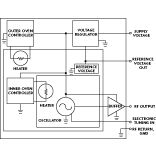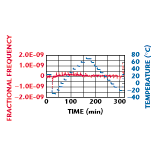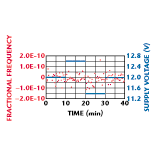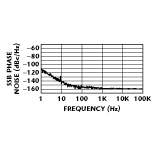A Three-dimensional EM Field Solver for High Frequency Applications
Structural Research & Analysis Corp.
Los Angeles, CA
Until recently, designing RF, microwave and mm-wave circuits and components using electromagnetic (EM) field simulators was a luxury for the majority of engineers working in these fields. Today, thanks in part to more powerful and affordable computers, using EM simulators as design tools is slowly becoming the economical solution of choice over the costly and lengthy alternative of prototyping and testing cycles. However, wide adoption of these tools by the industry at large is still limited by the availability of efficient and affordable EM simulators. The COSMOS/HFS 3D EM field solver addresses both of these issues.
Product Description
COSMOS/HFS 3D is a three-dimensional EM field simulator for high frequency applications that implements a full-wave solution of Maxwell’s equations using the finite element method (FEM). In this method, the space representing the circuit or component to be analyzed is first subdivided into tetrahedrons. The field in each tetrahedron then is represented in terms of tangential vector basis functions with unknown coefficients. This process leads to a system of linear equations characterized by a large sparse matrix, which is solved using specialized techniques.
Features
The COSMOS/HFS 3D field solver operates from GEOSTAR, the basic pre- and postprocessor of COSMOS/M" advanced analysis programs. Geometries can be built directly in GEOSTAR or by using a CAD or solid modeling system and then exporting the geometry to GEOSTAR. Solid modeling systems supported by GEOSTAR include SolidWorks, Solid Edge, Pro/ENGINEER (PTC), PT/Modeler (PTC), MicroStation Modeler (Bentley Systems Inc.), CADDS5 (ComputerVision/PTC), Unigraphics (EDS), Helix Design System (MICROCADAM), Eureka (Cad. Lab Inc.), I-DEAS (SDRC) and generic CAD systems in IGES format.
 Assemblies from SolidWorks can be imported readily to GEOSTAR through the COSMOS/Works fully integrated interface. Figure 1 shows a dual-resonator dielectric filter modeled in COSMOS/Works. The geometry can be imported to GEOSTAR and meshed, or the meshed model can be imported to GEOSTAR.
Assemblies from SolidWorks can be imported readily to GEOSTAR through the COSMOS/Works fully integrated interface. Figure 1 shows a dual-resonator dielectric filter modeled in COSMOS/Works. The geometry can be imported to GEOSTAR and meshed, or the meshed model can be imported to GEOSTAR.
The program is equipped with an extensive material library that comprises the most common dielectric materials used in high frequency applications. The library can be customized easily to meet individual needs by adding or removing materials as desired.
The analysis is executed by a highly efficient solver that offers a choice between an iterative matrix solution optimized for memory or a direct matrix inversion optimized for speed. A single progress window informs the user of the overall progress of the solution in a comprehensive manner, as shown in Figure 2 .
an iterative matrix solution optimized for memory or a direct matrix inversion optimized for speed. A single progress window informs the user of the overall progress of the solution in a comprehensive manner, as shown in Figure 2 .
 Generalized scattering parameters for arbitrary multiple-port structures, including multiple modes at each port, are computed over user-specified frequency ranges. Impedance and admittance matrices also are provided, as well as de-embedded and renormalized S parameters. Figure 3 shows a typical S21 vs. frequency plot. Several port-related propagation parameters also are provided.
Generalized scattering parameters for arbitrary multiple-port structures, including multiple modes at each port, are computed over user-specified frequency ranges. Impedance and admittance matrices also are provided, as well as de-embedded and renormalized S parameters. Figure 3 shows a typical S21 vs. frequency plot. Several port-related propagation parameters also are provided.
A wide range of postprocessing operations allows all aspects of the design to be explored fully. Any of the computed circuit parameters can be viewed easily in  graphical format through simple x-y plotting operations. Fields can be viewed in several ways, including shaded plots of the entire model or of selected cuts through it, contour plots or color-coded vector plots, as shown in Figure 4 . Users also can animate field plots and save the animation in standard .AVI format.
graphical format through simple x-y plotting operations. Fields can be viewed in several ways, including shaded plots of the entire model or of selected cuts through it, contour plots or color-coded vector plots, as shown in Figure 4 . Users also can animate field plots and save the animation in standard .AVI format.
The optional COSMOS/CAVITY resonance solver is available to help locate any resonances precisely so that they can be accounted for in subsequent S-parameter calculations. Results of the electromagnetic analysis can be interfaced to COSMOS/M’s thermal analysis programs. The same model built for the EM analysis can be used to perform additional analyses such as thermal, stress and fluid.
The program operates on standard desktop PCs with as little as 32 MB of random access memory. (Additional memory is required to solve larger problems.) Available platforms include Windows ’95/NT and UNIX.
Application Areas
With the flexibility of the FEM, COSMOS/HFS 3D covers a wide range of RF, microwave, mm-wave and wireless applications, including passive waveguide components, microwave hybrid monolithic ICs, MMICs, coupling structures, connectors, transitions, discontinuities, spiral inductors, interdigitated capacitors, filters, hybrids, vias, microstrip and stripline circuits, and launchers.
Conclusion
The COSMOS/HFS 3D EM field solver has been developed in conjunction with Integrated Microwave Technologies Inc., Montreal, Quebec, Canada. The program offers unique features, including easy and quick model building, memory-efficient and fast solvers, and comprehensive and flexible postprocessing. Additional information can be obtained from the World Wide Web at http://www.cosmosm.com.
Structural Research & Analysis Corp.,
Los Angeles, CA
(310) 207-2800.
